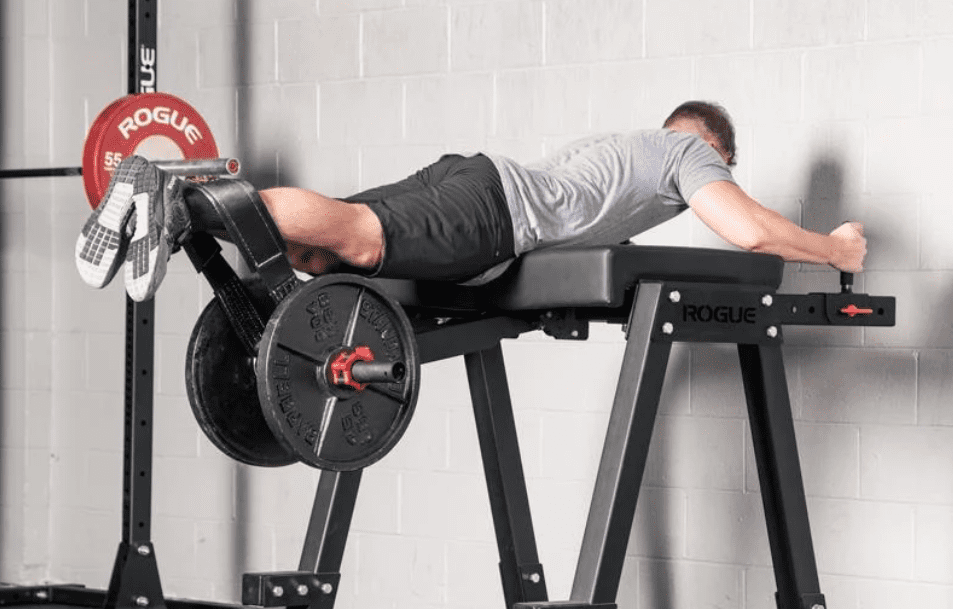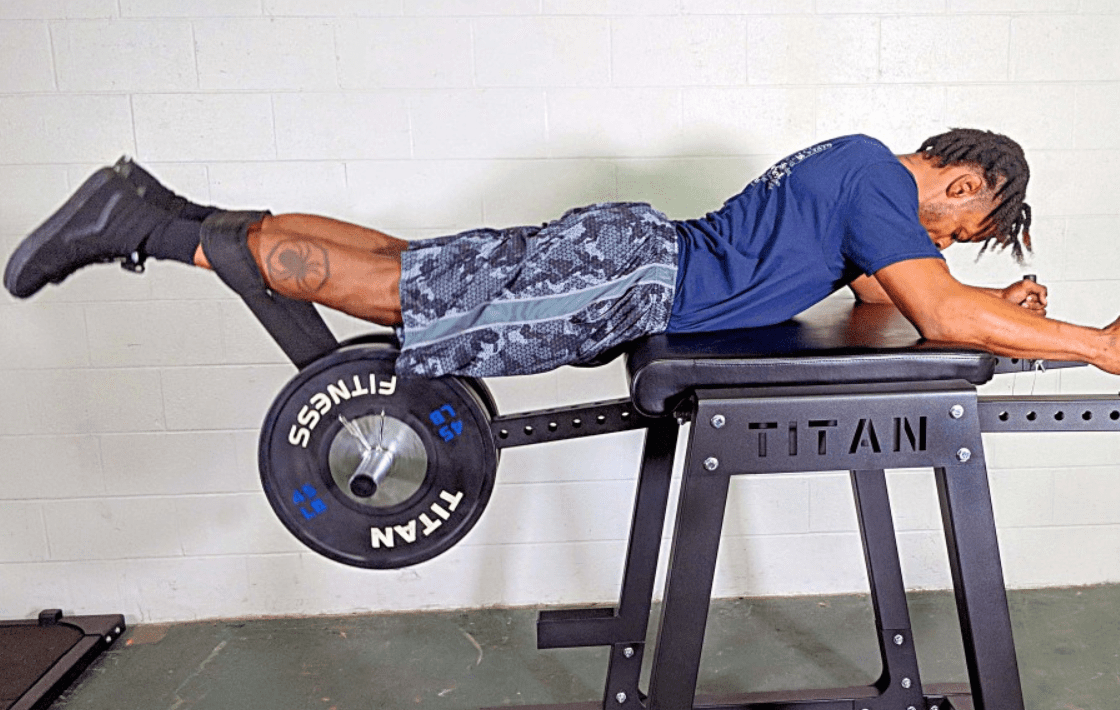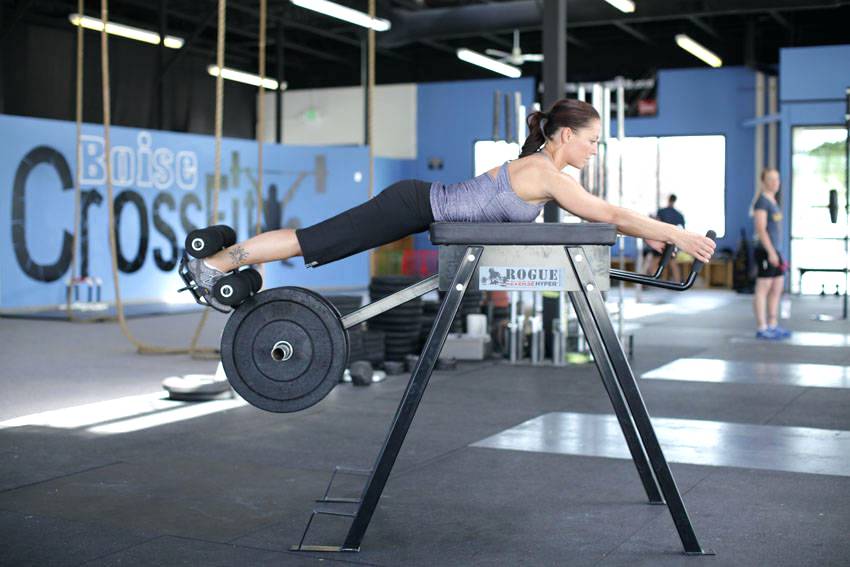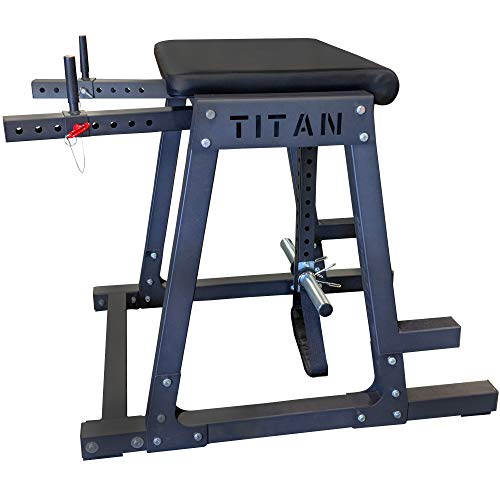Rogue Fitness Black Friday Sale
There is no better time to buy gym equipment then Black Friday and Rogue has already begun their sale. Click here to see the deals
Ready to learn about an exercise that renowned powerlifting coach Louie Simmons says will bulletproof your spine? Then you’re in the right place.
Named ‘reverse hypers’ (short for reverse hyperextensions), this exercise can save your back after heavy lifting sessions and strengthen your posterior chain..
Quick Links
The Best Reverse Hyperextension Machines
Simmons invented both the reverse hyper machine and exercise at his gym, Westside Barbell.
It took a bit to catch on, but now you’ll find reverse hyper machines anywhere from a CrossFit gyms to a rec center.
In this guide, we’ll break down what a reverse hyperextension is, it’s benefits, how to program them into your training, and how to do them if you don’t have the equipment.
Oh, and we’ll review the best reverse hyper machines at the end.
What Is A Reverse Hyperextension?

Rogue says the reverse hyper goes ‘beyond rehab’.
Westside Barbell says it’ll save your spine. Big claims—but what exactly does a reverse hyperextension do?
The reverse hyper is a machine (and exercise) that decreases compression on the lower spine. It also strengthens your hamstrings, glutes, and quads.
It’s typically used after a heavy training session (squats and deadlifts especially), or for accessory work.
Here you can see the reverse hyper done with the Rogue machine.
In lieu of the actual machine, two at-home options include using a Bosu ball or sturdy surface like a desk.
Reverse Hyperextension Benefits

Doing reverse hyperextensions can be seriously beneficial for your performance in the gym. The three major benefits are improved leg strength, improved core strength, and for recovery or therapeutic reasons.
Improved Leg Strength
Don’t be surprised when your hamstrings, glutes, and perhaps even lower back are sore after a few sets of reverse hypers.
It’s a good accessory lift for strengthening your posterior chain, which carries over into the deadlift, clean, and snatch.
Improved Core Strength
The reverse hyper is unlike most compound exercises, in that you aren’t using the Valsalva maneuver to brace yourself throughout the exercise.
The Valsalva maneuver is why strength coaches tell you to breathe in on before a squat, and exhale as you come up, as holding your breath helps to stabilize your spine in the bottom of the movement.
However, you use this same bracing technique in the first part of a reverse hyper, which strengthens your core muscles.
Recovery/Therapy Benefits

As the weight swings back, however, you may have to teach your body how to disengage those muscles completely.
It will feel odd at first, because it goes against everything you’re taught about weightlifting.
But disengaging and letting the weight ‘take you’ is where the decompression of your spine and rehab benefits come in.
Heavy barbell lifts put a lot of pressure on the lower back, and reverse hypers help to alleviate some of the tightness that happens after lots of squats or deadlifts.
How to Program Reverse Hyperextension?

You can add reverse hypers into your programming three to four times per week without any problem.
The key is to start with light weights and work your way up—basically sage advice for any gym exercise.
Start by doing 3 sets of 10-12 reps after your heavy lifts. Rest 1 minute between sets.
Experienced athletes (let’s say anyone that squats 1.5 to 2 times their bodyweight) might start with 25 or 45 lb plates on either side.
Any more than that might feel uncomfortable on your lower back or lead to injury.
If you’re shooting to add posterior chain strength from these, add 5-10 lbs per week.
At-Home Reverse Hyperextension Alternatives

Reverse hyper machines aren’t the cheapest piece of equipment for a home gym.
You may be seeking alternatives to reap the benefits of this exercise.
Two options are using a Bosu ball or sturdy surface like a desk. In either case, you want space for your legs to travel beneath you freely, which may be hard with a Bosu ball.
You can use ankle weights or bands tied to kettlebells to add resistance for either at-home variation.
What Muscles Are Worked Doing A Reverse Hyperextension?
Your hamstrings, glutes, quads, and lower back muscles do most of the work during a reverse hyperextension.
With heavier weights, your hamstrings are forced to contract hard to get the weight going for the first few reps. Done correctly, you’ll be able to use momentum as the set goes on.
Top Reverse Hyperextension Machines
Rogue Z Hyper

Pricey? Yes. Heavy? Try 363 pounds. But if you’ve seen a reverse hyper machine at a gym before, chances are it was this Rogue model.
The reviews on it are pretty flawless, with one home gym owner saying the equipment is built to survive a nuclear war.
Like they usually do, Rogue delivers on quality. You’ll pay a pretty penny for this model (over $800), but expect it to last you a long time.
Get The Rogue-Z-Hyper on RogueFitness.com
Titan H-PND
Titan is known for making quality equipment at reasonable prices, and that’s exactly the model they followed with their reverse hyper machine.
It costs $300 less than Rogue’s, looks very similar, and reviewers say it assembles easily. This is the more expensive of their two options (economy version is below).
Get The Titan H-PND on Amazon.com
Titan Economy H-PND
A quick click will show you the difference between the H-PND and the Economy H-PND.
If being pretty doesn’t matter to you, you can save another $200 on your reverse hyper machine with the Economy model.
I mean, if it fixes your back and makes your deadlift go up, who cares what it looks like?
Get The Titan Economy H-PND on Amazon.com
Conclusion
Reverse hyperextensions took a while to catch on, but nowadays are a very popular tool for rehabbing back injuries and strengthening your posterior chain.
Whether you use it for accessory work or as part of a strength program, you can’t really go wrong with adding them to your programming.
As with any other exercise, start light and progress slowly as the weeks go on.

